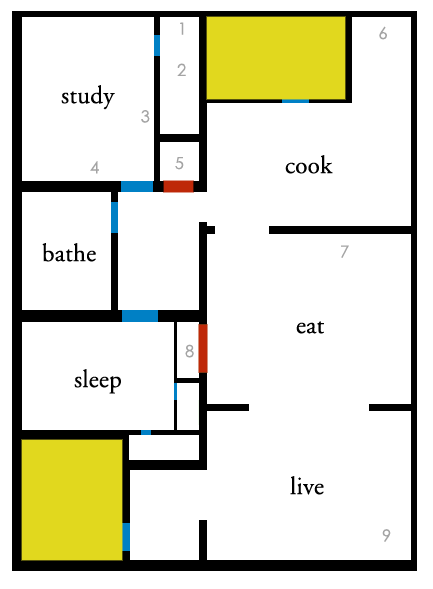
1. General music history books (Grout etc.), also Weiss-Taruskin and Strunk.
2. General music theory books (A-S, etc.)
3. by shelf (a) Small reference materials (Liber Usualis, Dictionaries,
etc.)
(b) Trecento reference materials (RISM, Fallows cat.), trecento
conference volumes, Machaut materials.
(c) Medieval theory, Apel,
pre-trecento facsimilies; scores A-Z under folio size.
(d) Minimalism
books, clarinet music.
(behind) thin elephant folios (scores by Crumb, Martino, etc.)
4. (a) PMFC 5-11, 17-23B, LIM facs., De Musica Mensurata
(b) PMFC 12-13, 24; my pubs; piano music; folio-sized scores A-B
(c) folio-sized scores C-Z
5. (a) (lacuna)
(b) Handschriftenabteilung, Squarcialupi and other large
Facs. (Torino J.II.9, Ox 213)
(c) Non agunt de musica (linens)
(d) Folders of trecento materials, Bologna 2216 materials
(e) Religious books, computer books
6. Mathematics. Economics. Miscellaneous. Cookbooks.
7. Music history by period (excluding trecento and minimalism). Non-western music. Music theory.
8. (I.1) History and Philosophy (non-music), bound fiction
(I.2) Poetry and plays
(I.3) Unabridged dictionaries, art history, baseball
(II.1 = drawers) Novels (alpha by author) in small format
(II.2) Other prose. Travel. Linguistics.
(II.3) JAMS, other journals
9. CDs (alpha by composer, then period, then ensemble type). DVDs (music then feature films). Phonograph records.